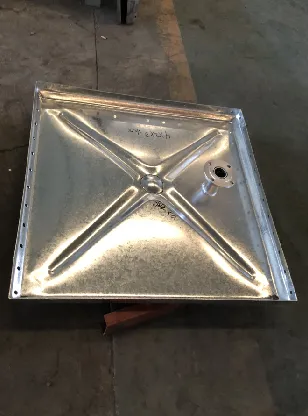loading...
- No. 9, Xingyuan South Street, Dongwaihuan Road, Zaoqiang County, Hengshui, Hebei, China
- admin@zjcomposites.com
- +86 15097380338
- Welcome to visit our website!
Determining Appropriate Sizes for GRP Water Storage Tanks
Understanding GRP Water Tank Sizes A Comprehensive Guide
Glass-Reinforced Plastic (GRP) tanks have become increasingly popular in various applications, particularly for water storage. Their unique properties, including durability, resistance to corrosion, and lightweight nature, make them ideal for both industrial and domestic use. Understanding the different sizes of GRP water tanks is essential for selecting the right one for your needs. This article aims to explore the various sizes of GRP tanks, factors that influence their selection, and the advantages they offer over conventional materials.
What are GRP Water Tanks?
GRP water tanks are constructed from a composite material that combines glass fibers with resin. This combination results in a structure that is not only robust but also resistant to a wide range of environmental factors, including UV radiation, chemicals, and extreme temperatures. GRP tanks can be customized to suit various needs, which is one reason behind their growing popularity in sectors like agriculture, municipal water supply, and industrial operations.
Common Sizes of GRP Water Tanks
One of the appealing aspects of GRP water tanks is their versatility in size. They can be manufactured in various dimensions to accommodate different storage requirements. Common sizes range from as small as 100 liters for domestic use to over 100,000 liters for industrial applications.
1. Small Tanks (100 - 1,000 liters) These are typically used in residential settings, such as for garden irrigation, emergency water supply, or small-scale agricultural purposes.
2. Medium Tanks (1,000 - 10,000 liters) Ideal for larger households, small businesses, or farms, these tanks can serve multiple purposes, including storage for potable water, rainwater harvesting, or irrigation systems.
3. Large Tanks (10,000 liters and above) These are designed for significant industrial applications, municipal water supply, and large agricultural operations. They often feature enhanced structural designs to handle greater pressure and volume.
Factors Influencing Tank Size Selection
When selecting the appropriate GRP water tank size, there are several critical factors to consider
1. Water Demand Assess the daily water consumption and peak usage times. This is crucial for determining capacity; you wouldn’t want to run dry during peak usage.
grp water tank sizes

2. Available Space Evaluate the physical space where the tank will be installed. Larger tanks will require more area, which could be a limiting factor in urban settings.
3. Budget Larger tanks generally cost more, not only in terms of the tank itself but also regarding installation and maintenance expenses.
4. Future Expansion Consideration of future water needs is also vital. If you anticipate growth, selecting a larger tank may save you the costs of upgrading later.
Advantages of GRP Water Tanks
GRP tanks offer several advantages over traditional water storage options like concrete or steel tanks
1. Corrosion Resistance GRP does not corrode like metal, ensuring a longer lifespan and less maintenance.
2. Lightweight The reduced weight of GRP tanks simplifies transportation and installation compared to heavier alternatives.
3. Customizable These tanks can be customized in terms of shape, size, and color, allowing for greater flexibility in design.
4. Thermal Insulation GRP tanks offer better thermal insulation, helping maintain water temperature, which can be essential for certain applications.
5. Cost-Effective While the initial investment might be higher, the long-term savings due to durability and low maintenance make GRP tanks a cost-effective choice.
Conclusion
Choosing the right size of a GRP water tank is critical for meeting water storage needs effectively. By considering factors such as water demand, available space, and future expansion, one can make an informed decision that balances practicality and budget considerations. The durability, lightweight nature, and versatility of GRP tanks make them an excellent option for various applications, ultimately contributing to efficient and sustainable water management practices. With a range of sizes available, there is a suitable GRP water tank for every requirement, ensuring you have access to the water you need when you need it.
-
The Rise of FRP Profiles: Strong, Lightweight, and Built to LastNewsJul.14,2025
-
SMC Panel Tanks: A Modern Water Storage Solution for All EnvironmentsNewsJul.14,2025
-
GRP Grating: A Modern Solution for Safe and Durable Access SystemsNewsJul.14,2025
-
Galvanized Steel Water Tanks: Durable, Reliable, and Ready for UseNewsJul.14,2025
-
FRP Mini Mesh Grating: The Safer, Smarter Flooring SolutionNewsJul.14,2025
-
Exploring FRP Vessels: Durable Solutions for Modern Fluid HandlingNewsJul.14,2025
-
GRP Structures: The Future of Lightweight, High-Performance EngineeringNewsJun.20,2025
